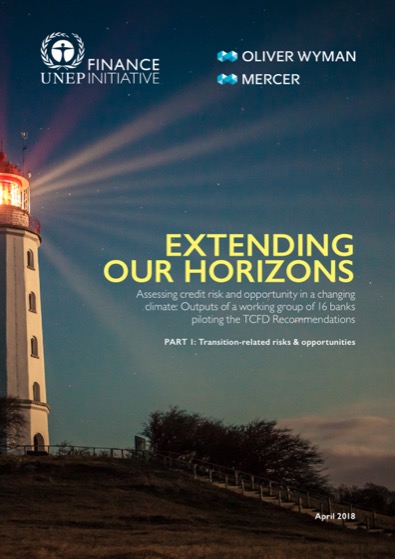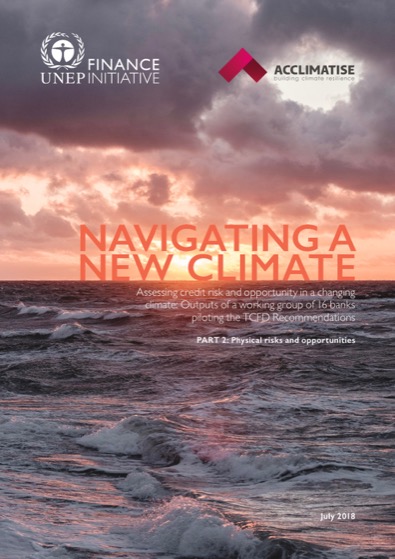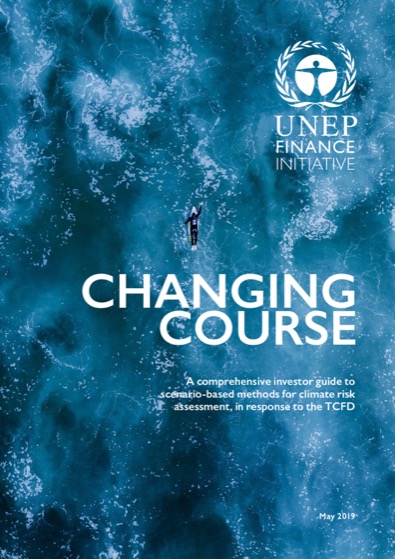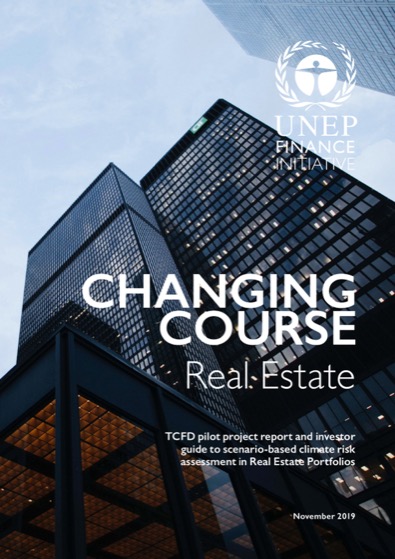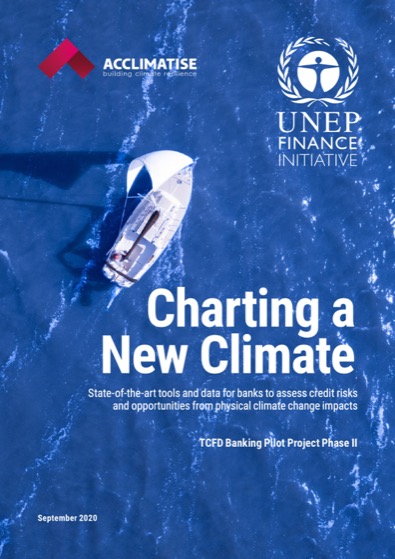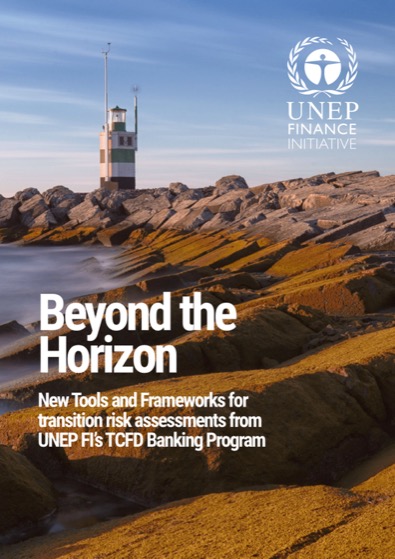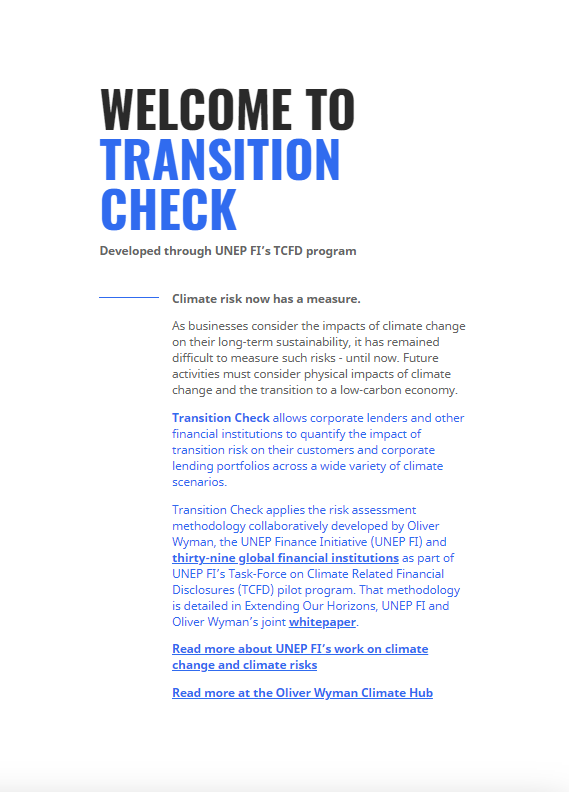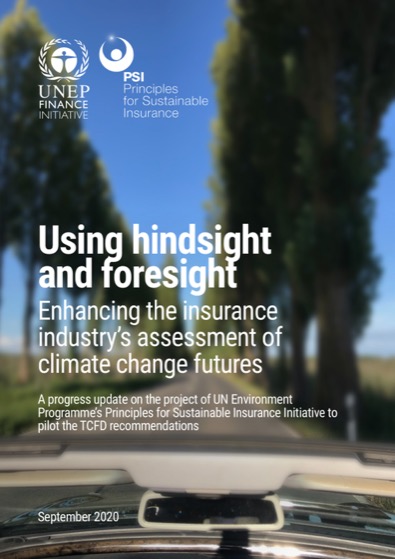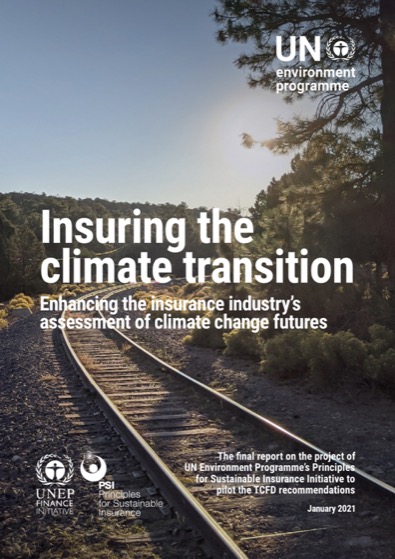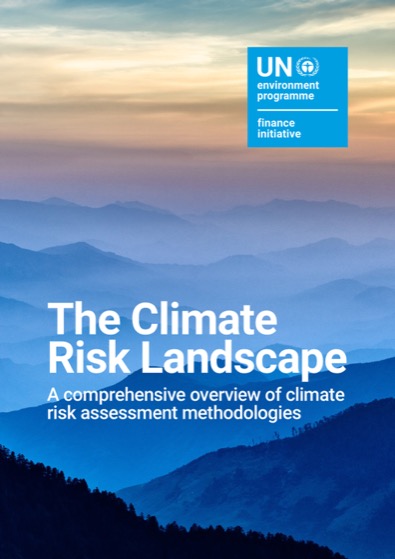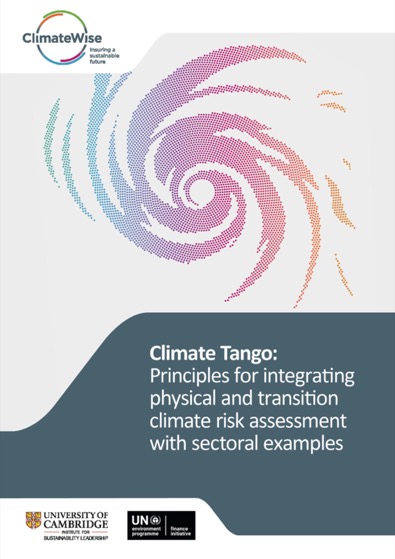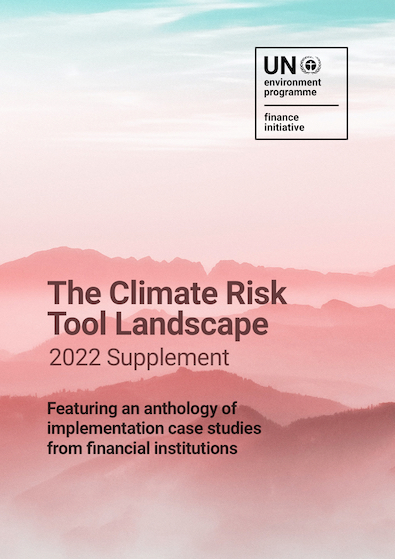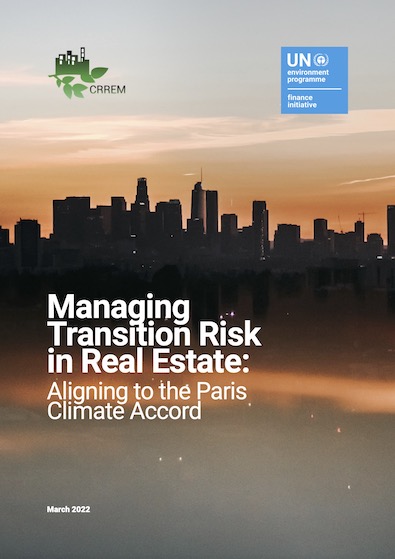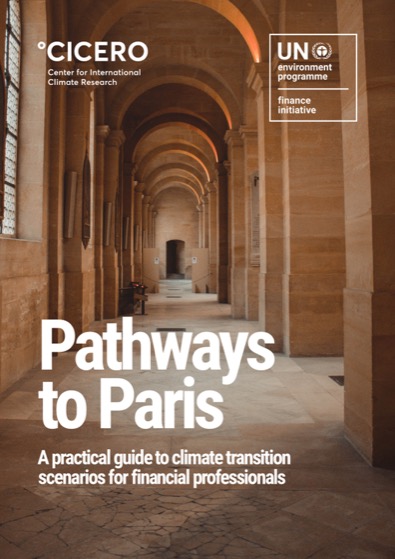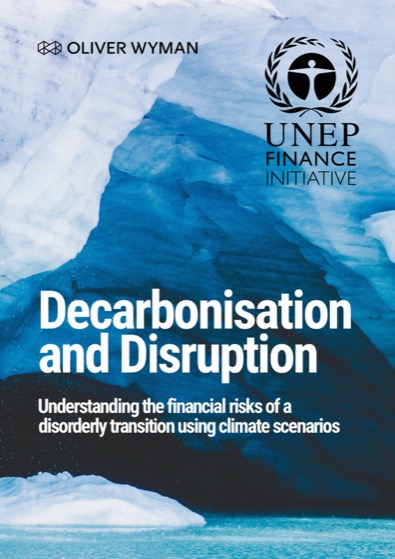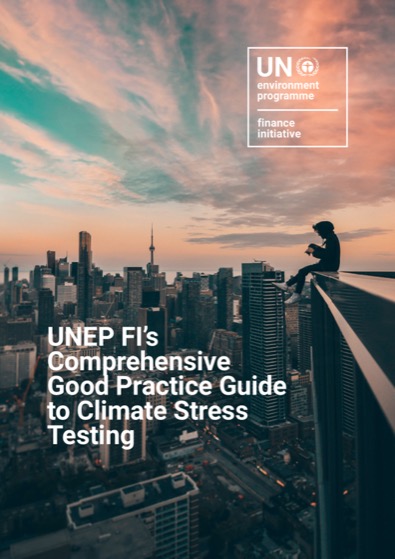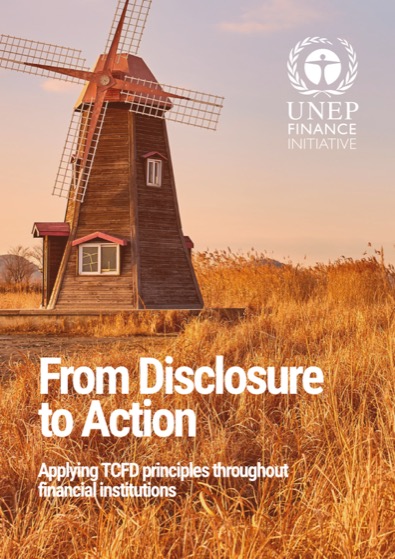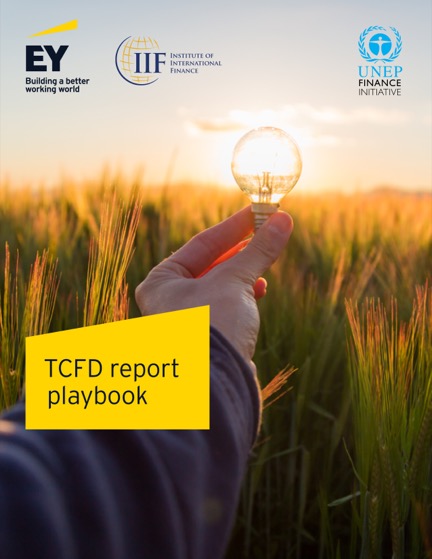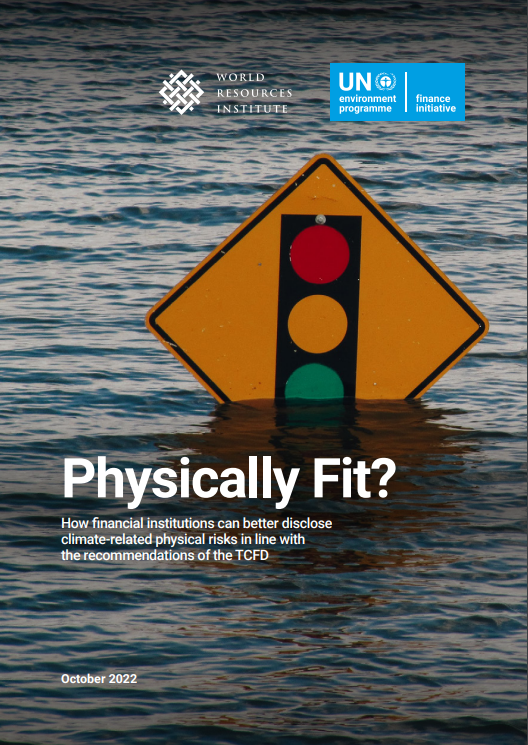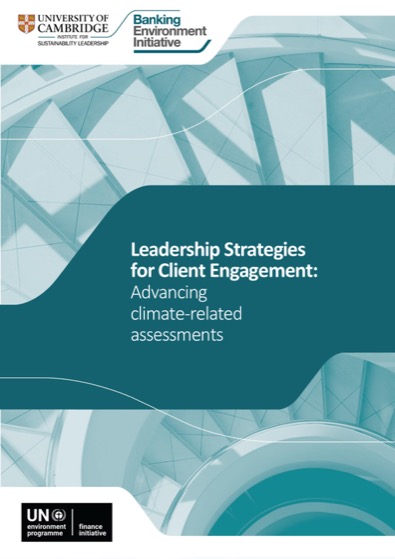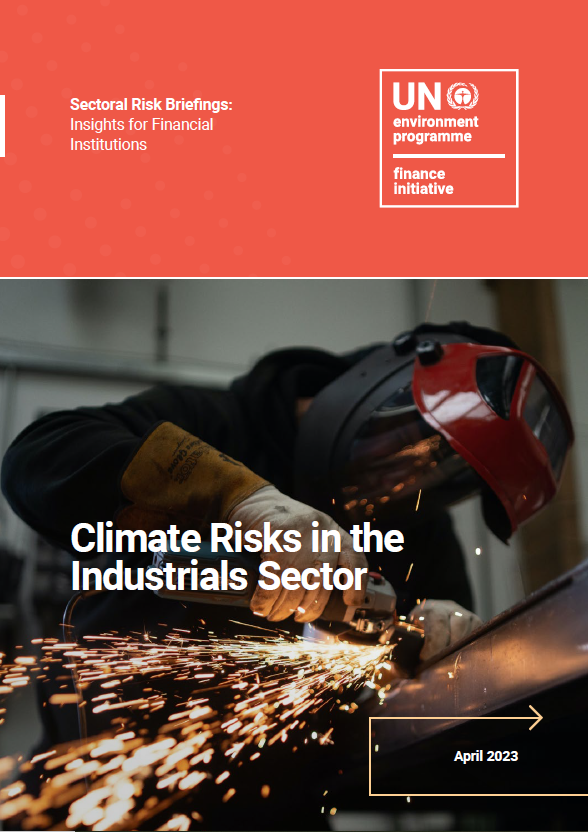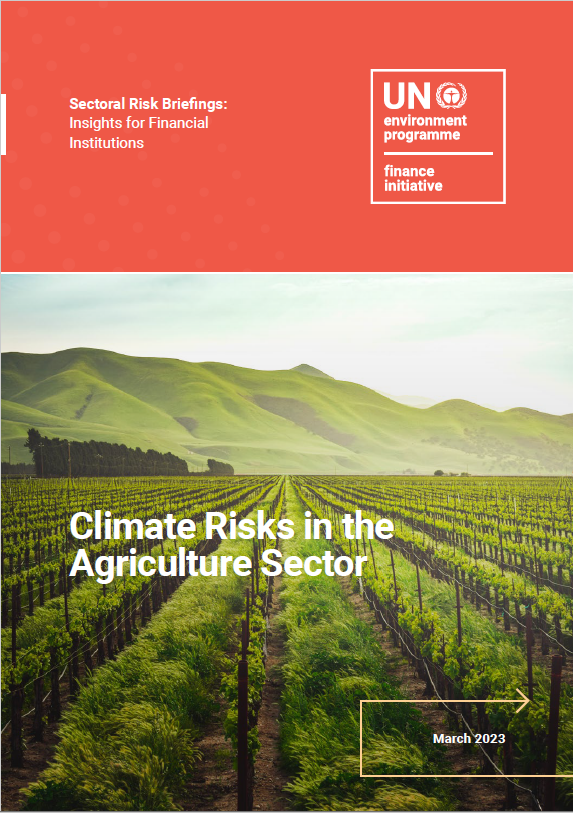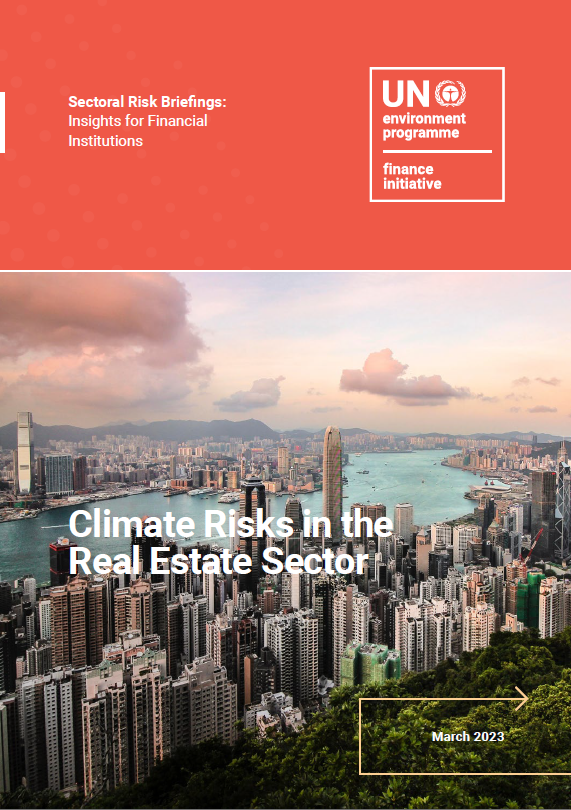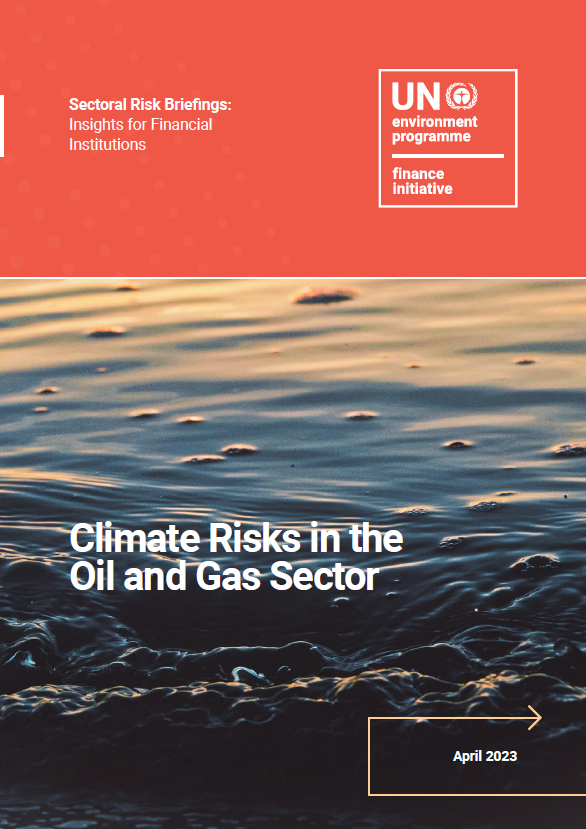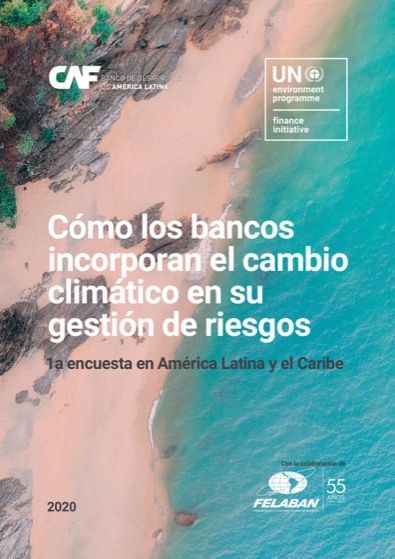Together with its members, UNEP FI has created numerous tools, methodologies, and guides to empower banks, investors and insurers to better assess, disclose and manage their climate risks. Find all the resources developed by UNEP FI’s Climate Risk and TCFD programme below.
Jump directly to:
- Tools and assessment methodologies
- Climate scenarios (physical and transition risk pathways)
- Reporting and regulatory guidance
- Sectoral risks and supporting client engagement
- Regional initiatives
Tools and assessment methodologies
Extending our Horizons: Assessing Credit Risk and Opportunity in a Changing Climate (2018) details the jointly developed methodology for scenario-based assessment of the transition-related risk and opportunities.
Target audience: banks, investors, insurers
Navigating a New Climate: Assessing Credit Risk and Opportunity in a Changing Climate (2018) covers physical risk assessment methodologies.
Target audience: banks
Changing Course: A comprehensive investor guide to scenario-based methods for climate risk assessment(2019) analyses, evaluates, and tests, state-of-the-art methodologies to enable 1.5°C, 2°C, and 3°C scenario-based analysis of investors portfolios in line with the TCFD recommendations. Supported by Carbon Delta.
Target audience: investors
Changing Course: Real Estate – TCFD pilot project report and investor guide to scenario-based climate risk assessment in Real Estate Portfolios (2019) aims to enhance the understanding and ease adoption of the TCFD recommendations by real estate investors across the wider investment industry.
Target audience: investors
Charting a New Climate (2020) supports financial institutions in navigating the changing physical climate risk landscape. The report explores physical risk data, tools, correlation analyses, heatmapping, and opportunity identification among other crucial topics.
Target audience: banks
Beyond the Horizon (2020) supports banks in analysing transition risks, featuring a comprehensive transition risk heatmap developed by the participating institutions that provides perspectives into how climate-sensitive sectors may be impacted by a low-carbon transition.
Target audience: banks
Transition Check (2020) is a user-friendly webtool that enables financial institutions to assess transition risks across a wide range of geographies, economic sectors, and climate scenarios (including NGFS scenarios). The tool produces loss estimates, PDs, and LGDs in a clean, downloadable format to support internal assessments and TCFD reporting.
Target audience: banks, investors, insurers
Using hindsight and foresight: Update from the TCFD Pilot Project for Insurers (2020) provides insights from the project that 22 leading insurers and reinsurers from across the globe have joined to explore and pilot methodologies that insurers can use to implement the recommendations of the Financial Stability Board’s Task Force on Climate-related Financial Disclosure (TCFD).
Target audience: insurers
Insuring the climate transition: Enhancing the insurance industry’s assessment of climate change futures (2021) supports the insurance industry in identifying and disclosing the impact of climate change on their businesses based on the TCFD recommendations.
Target audience: insurers
The Climate Risk Landscape: Mapping Climate-related Financial Risk Assessment Methodologies (2021) provides a summary of the key developments across third party climate risk assessment providers from 2019 to 2021, including scenarios, methodological tools, key guidelines, as well as an overview of the changing regulatory landscape and potential developments into 2021.
Target audience: banks, investors, insurers
Climate Tango: Principles for integrating physical and transition climate risk assessment with sectoral examples (2022) explores the combined financial impact of physical and transition risks. The report includes theoretical principles and practical steps for implementation of an integrated assessment of physical and transition risks with examples of sectoral analysis.
Target audience: banks and insurers
The Climate Risk Tool Landscape: 2022 Supplement gives financial institutions insights into the process, challenges, and outputs related to using selected climate risk tools through detailed case studies from 15 financial institutions.
Target audience: banks, investors, insurers
Managing Transition Risk in Real Estate: Aligning to the Paris Climate Accord (2022) assesses the state of real estate assets and the challenges the sector faces to align to net zero. It provides insights on the climate challenges confronting the real estate sector, and recommendations for addressing them.
Target audience: banks and insurers
Climate scenarios (physical and transition risk pathways)
Pathways to Paris: A practical guide to climate transition scenarios for financial professionals (2021) is a detailed guide, in partnership with CICERO, for financial sector practitioners looking to understand and apply climate scenarios in a financial risk context. This paper also contains case studies from participating banks that capture their experiences using climate scenarios.
Target audience: banks, investors, insurers
Decarbonisation and Disruption: Understanding the financial risks of a disorderly transition using climate scenarios (2021) covers two primary themes of relevance to financial institutions, with support from Oliver Wyman. First, it examines sector specific risk drivers that could result in a disorderly transition, making the argument that climate transition risk is a significant near-term threat to much of the economy. Second, the report explored how these risk drivers are currently being modeled in climate scenarios produced by major integrated assessment models (IAMs). The paper also includes bank case studies.
Target audience: banks, investors, insurers
Good Practice Guide to Climate Stress Testing (2021) is a detailed user guide for financial institutions looking to understand climate stress testing and develop plans for effectively executing them. It has been created to assist the financial sector in its climate stress testing journey and should be adapted to meet the needs of a given firm.
Target audience: banks
Reporting and regulatory guidance
From Disclosure to Action (2020) – a stock-take on how financial institutions are incorporating climate risk into their operations. Numerous bank case studies and UNEP FI TCFD participant survey results provide details on the latest practices. The paper also provides concrete and actionable guidance on integrating climate risk throughout an organization.
Target audience: banks
TCFD Playbook (2020) – developed through consultation with member financial institutions, this document provides guidance on and examples of leading practices around TCFD reporting in the financial sector. This desk reference also aims to enhance the depth and comparability of TCFD disclosures by financial institutions. Developed with the Institute for International Finance.
Target audience: banks, investors, insurers
Physically Fit? How financial institutions can better disclose climate-related physical risks in line with the recommendations of the TCFD (2022) provides guidance on the disclosure of physical climate risks in line with the TCFD recommendations. Developed with the World Resources Institute (WRI).
Target audience: banks
Sectoral risks and supporting client engagement
Leadership strategies for client engagement: Advancing climate-related assessments is designed to support the financial sector to improve assessment and interactions with clients in line with net zero plans. It builds on the University of Cambridge Institute for Sustainability Leadership’s Banking Environment Initiative Let’s Discuss Climate: the essential guide to bank-client engagement.
Target audience: banks, investors, insurers
Climate Risks in the Industrials Sector (2023) explores the key physical and transition risks that banks, investors and insurers with clients in the industrials sector face.
Target audience: banks, investors, insurers
Climate Risks in the Agriculture Sector (2023) explores the key physical and transition risks that banks, investors and insurers with clients in the agriculture sector face.
Target audience: banks, investors, insurers
Climate Risks in the Real Estate Sector (2023) explores the key physical and transition risks that banks, investors and insurers with clients in the real estate sector face.
Target audience: banks, investors, insurers
Climate Risks in the Oil and Gas Sector (2023) explores the key physical and transition risks that banks, investors and insurers with clients in the industrials sector face.
Target audience: banks, investors, insurers
Regional initiatives
How banks incorporate climate change in their risk management – 1st survey in Latin America & the Caribbean (2020) was undertaken by UNEP FI and CAF – Development Bank of Latin America, in collaboration with the Latin American Federation of Banks (FELABAN). It showcases the level of knowledge, current commitments and future goals on climate risk management of the banking sector in the region. The 78 banks that were part of this study belong to 11 countries in the region.
Target audience: banks



